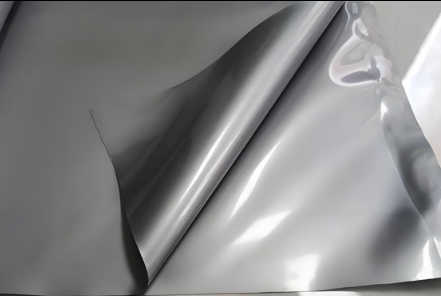Three Practical Tips for Getting the Best Results with Aluminum Paste
2025 / 11 / 12
Aluminum paste is a versatile metallic pigment used across countless industries to create stunning visual effects and provide functional benefits. From the brilliant metallic finish on automobiles to the attractive packaging of your favorite products, this material delivers that characteristic shine we often associate with quality and premium appeal. However, working with aluminum paste can be tricky. To achieve a flawless, durable, and brilliant metallic finish, it's crucial to handle it correctly. Here are three essential tips that can help you avoid common pitfalls and ensure optimal performance in your coatings and inks.

1. Ensure Complete Dispersion in Your Coating System
The first and perhaps most critical step is achieving complete and uniform dispersion of the aluminum paste within your coating system. Aluminum paste consists of countless tiny, flat flakes suspended in a carrier oil. These flakes are what create the metallic effect by reflecting light. If the paste is not properly dispersed, you will encounter several problems:
-
Poor Metallic Appearance: Incomplete dispersion leads to agglomerates or "fish eyes," which appear as dark spots or uneven glitter in the final film. Instead of a smooth, continuous shine, you get a speckled, inconsistent finish.
-
Reduced Coating Integrity: These clumps can create weak points in the coating film, compromising its protective properties and potentially leading to premature failure like cracking or peeling.
-
Application Issues: The uneven particle distribution can cause clogging in spray guns or create streaks during application.
How to Achieve It:
Always follow the manufacturer's recommended dispersion procedure. Typically, this involves pre-mixing the aluminum paste with a portion of the solvent or base under slow-speed stirring to wet the particles, followed by a more thorough mixing to ensure a homogenous blend. Avoid using high-shear mixing, as it can damage the delicate aluminum flakes, breaking them into smaller pieces and dulling the metallic effect.
2. Choose the Correct Dilution Solvent (And Avoid Nitrogen-Based Ones)
Aluminum paste is usually supplied as a concentrated paste that needs to be diluted before use. A common misconception is that any solvent will do. In reality, the choice of dilution solvent is paramount and is primarily determined by the resin system of your final paint or ink.
Using the wrong solvent can lead to gelling, poor stability, or a complete loss of optical properties.
-
The Golden Rule: The solvent you use to dilute the aluminum paste must be compatible with the main resin in your coating formulation.
-
The Critical Warning: It is vital to note that nitrogen-based solvents are not suitable for any aluminum paste. Solvents such as amines can react chemically with the aluminum flakes. This reaction typically results in gassing (the production of hydrogen bubbles), gelation of the paste, and a dark discoloration of the flakes. This not only ruins the paste but can also be a safety hazard due to pressure build-up in sealed containers.
Safe Choices:
Commonly used and generally safe solvents include aliphatics, aromatics (like toluene or xylene), and esters. Always consult your aluminum paste supplier's technical data sheet for a list of recommended solvents for their specific products.
3. Achieve Parallel Orientation for a Perfect Finish
Once you have a well-dispersed and properly diluted aluminum paste, the final key to brilliance lies in what happens during film formation. For the aluminum flakes to provide maximum brightness and metallic shine, they must align parallel to the substrate surface, much like tiny mirrors lying flat.
When flakes are randomly oriented, light is scattered in different directions, resulting in a dull, grayish, or speckled appearance. When they are aligned in parallel, they reflect light uniformly back to the viewer, creating that deep, brilliant luster and a high flop effect (the visual change in lightness when viewed from different angles) that is highly desired, especially in automotive coatings.
How to Promote Parallel Orientation:
-
Proper Film Thickness: Applying a film that is too thick can prevent the flakes from settling and aligning properly.
-
Optimized Solvent Blend: Using a balanced solvent system that allows adequate time for the flakes to float and orient before the film sets is crucial.
-
Additives: Specific additives can be incorporated into the formulation to help the flakes migrate to the surface and align parallel to it.
By paying close attention to these three areas—dispersion, solvent selection, and flake orientation—you can consistently achieve a superior metallic finish that is both visually stunning and technically sound.
Explore how our encapsulated aluminum pastes can transform your coatings. Visit https://zqmetallic.com/ or contact our technical team today.
Shandong Yinjian Aluminum Pigment Co., Ltd. – Innovating Metallic Effects Since 1987.
- Previous:Aluminum Powder: The Secret Behind Modern Metallic Finishes
- Next:I have no

